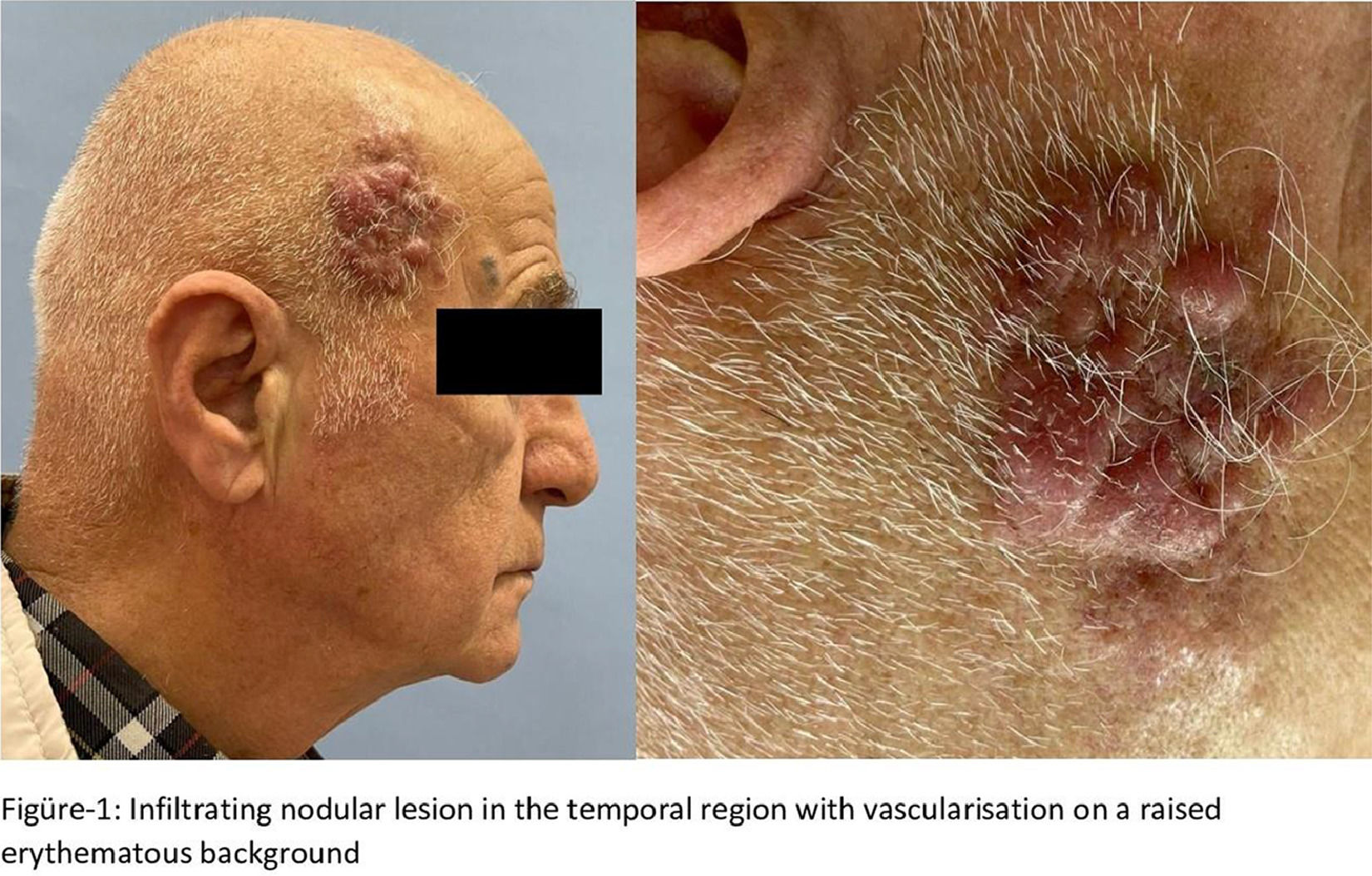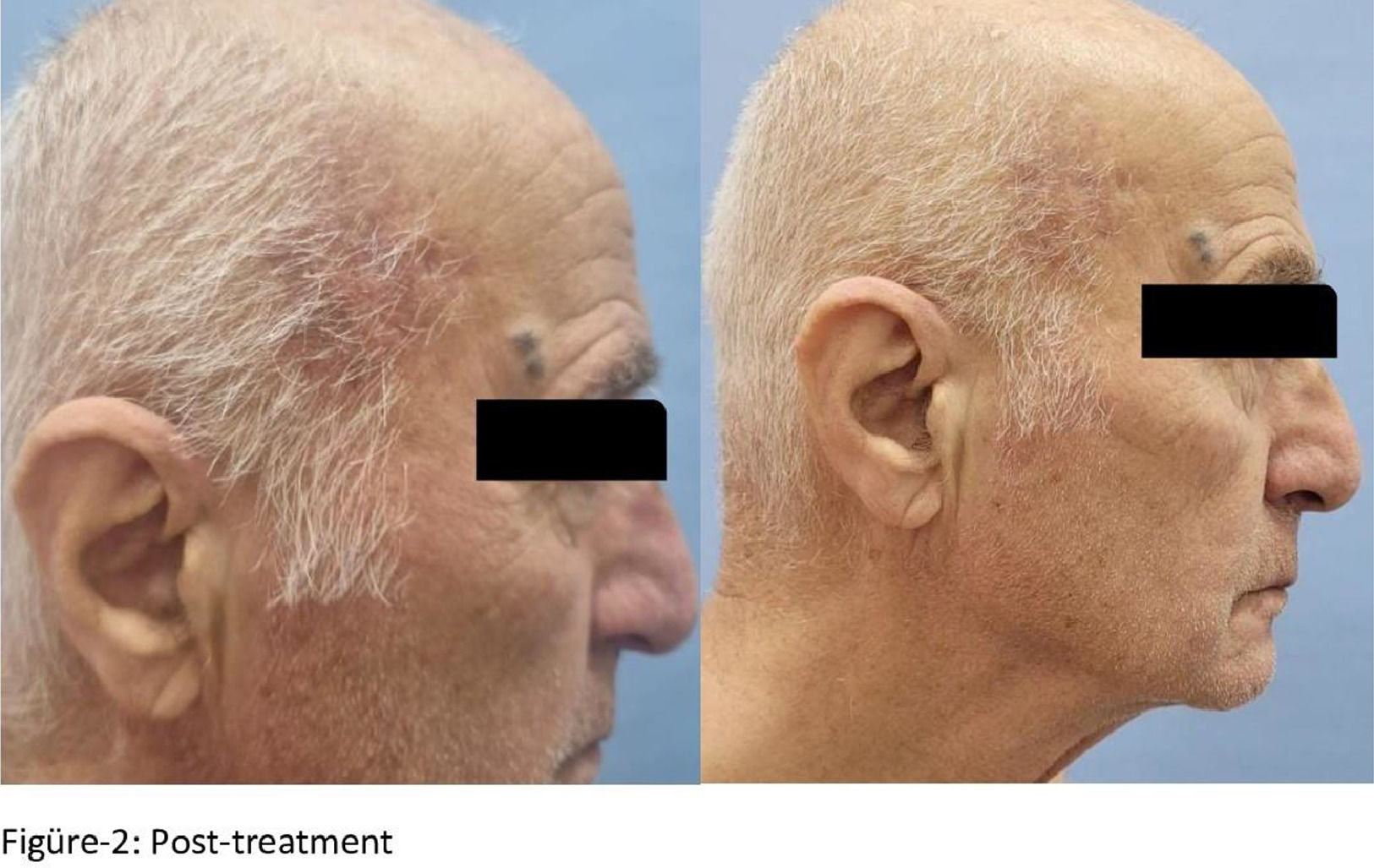
Diffuse large B-cell lymphoma (DLBCL) is the most common histological subtype of non-Hodgkin lymphoma (NHL). Extra nodal involvement of B-cell lymphoma is usually seen in the gastrointestinal system, followed by the skin. Skin involvement of B-cell lymphomas can be primary or secondary. In this article, we aimed to present a case of DLBCL which did not have skin involvement before but showed recurrence with skin involvement.
Case reportA 77-year-old male patient presented with a diagnosis of DLBCL based on excisional LAP biopsy in the inguinal region conducted in November 2022. Laboratory tests revealed Hgb 14.3 g/dL, WBC 4.6 × 10^3/μL, plt 191 × 10^3/μL. Following 4 cycles of R-mini CHOP based on the stage 4 DLBCL diagnosis from PET-CT, interim PET-CT showed regression in existing lesions.
Methodology: The R-miniCHOP regimen was completed with 8 cycles. In December 2023, a nodular lesion with raised erythematous ground and vascularity in the temporal region was identified (Figure 1). Dermatological evaluation and biopsy revealed infiltration consistent with high-grade B-cell lymphoma. PET-CT detected increased FDG uptake (SUVmax: 10.13) in a soft tissue-density lesion in the right parietal region. Due to age and performance status, the patient was planned for Rituximab-Lenalidomide protocol.
Results: Starting from the 1st cycle, lesions showed regression, and by the 2nd week of the 1st cycle, complete disappearance of lesions was observed (Figure-2).
Conclusion: In conclusion, while NHL usually recurs in the same sites of involvement, widespread secondary cutaneous involvement has also been reported in the literature. In our patient who did not have primary skin involvement, disease recurrence occurred in the cutaneous region.In cases like ours, the optimal treatment option is salvage chemotherapy followed by autologous stem cell transplantation.








